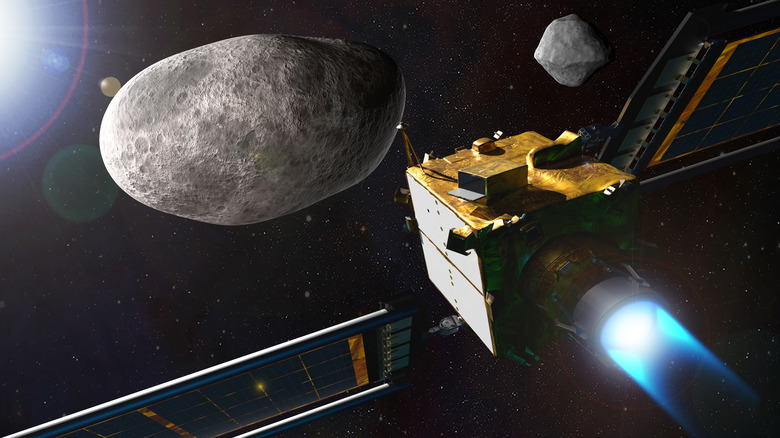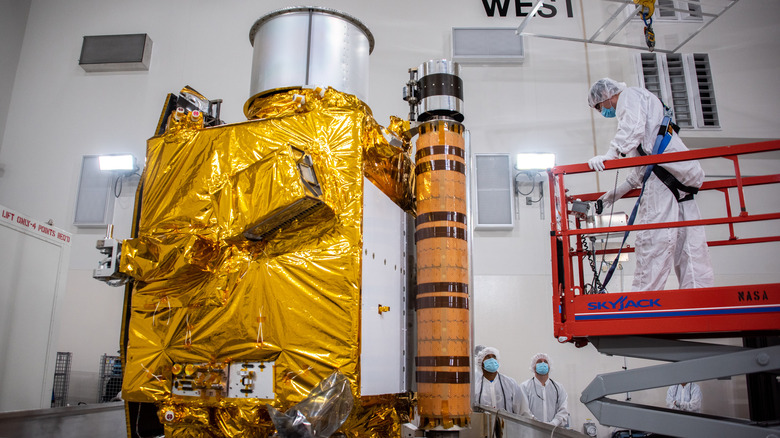Here's How You Can Watch NASA Crash A $330M Spacecraft
As dramatic livestreams go, NASA's latest has the potential to be seriously explosive. Tonight, the U.S. space agency will be broadcasting the incredible culmination of its Double Asteroid Redirection Test (DART) from 6pm EST. Over the course of the test, viewers will (hopefully) get to watch NASA slam a big rocket into an asteroid at 14,400 miles per hour.
The test is to determine the feasibility of knocking an asteroid off course if one ever gets too close for comfort. DART costs $330 million but that's a small price to pay if an asteroid is actively threatening humanity. For comparison, that's roughly 33,000 times the value of a 1968 Dodge Dart GT coupe. Built by Johns Hopkins Applied Physics Lab — the asteroid redirector, not the car — DART was given its one-way ticket to the wild blue yonder on a SpaceX rocket last fall.
A probe launched from DART, dubbed the LICIACube, will act as the event's camera crew and stream the spectacle back towards viewers on Earth. If all goes according to plan, DART's sacrifice for all of humanity will not be in vain.
A television event that's out of this world
NASA will be livestreaming its off-world demolition derby on its own YouTube channel, NASA TV, the space agency has confirmed. DART's target is an asteroid by the name of Dimorphos, which measures in at 163 meters — or almost 535 feet — wide. NASA hopes DART's fateful journey will alter Dimorphos' orbit around its big brother, another asteroid named Didymos; neither present Earth with any real threat, but Dimorphos was selected for its relatively small size. That way, it should be easier to tell just what disruption to its path DART's impact actually had
If the test is successful, it'll adds another weapon to NASA's arsenal if the movie "Don't Look Up" ever becomes a reality. Instead of launching Bruce Willis to destroy an asteroid like in the movie "Armageddon," NASA can attempt to shoot it with a rocket to save the day. Plus, it gives the new United States Space Force something to do (beyond giving social media users something to laugh about). At $330 million, it's not even the most expensive defense-oriented government project. As a planet-wide security measure, it's a relative bargain.
The FIFA World Cup and the Super Bowl may be the sports events of the year, but NASA's DART launch this evening might be the only TV event with potential galactic importance. The live broadcast will start at 6pm EDT, with the impact targeted for 7:14 pm EDT. That will be followed by a press briefing to cover the preliminary results.

